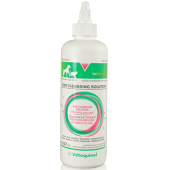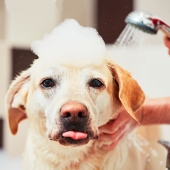When the sun is shining and summer is in full swing, it’s easy to forget how hot a patio, a driveway, the sidewalk or even sand on the beach can get. Until you step on it barefoot and burn your toes, that is! Before taking your dog for a walk on a hot day, remember this feeling and make sure their paws can handle the heat.
A dog’s footpads are not shoes
In natural surroundings, the footpads underneath a dog’s paws help protect the animal from getting injured when stepping on debris, pointy rocks and twigs. But they’re not meant to handle the extremely high temperatures that man-made surfaces like asphalt, concrete and artificial turf can reach. Pavement absorbs heat from the sun throughout the day and retains most of it; it can quickly become hot enough to cause serious burns to exposed skin.
How hot is too hot for a walk?
The “5-second rule” is a quick way of assessing if a surface is too hot for your dog’s paws. Press the palm of your hand firmly against the sidewalk or pavement and try holding it in place for five seconds. If your hand can’t withstand the heat, it will be just as painful for your dog’s paws. Better stick to grass and the backyard if that’s the case!
Walk your dog early or late
During the summer, try walking your dog early in the day or late in the evening. This will allow streets and sidewalks to cool off, making the experience more pleasant for your furry friend. Cooler temperatures also help protect your dog from the hazards of hot weather.
Toughen those dog paws!
Walking on rough surfaces like pavement in mild temperature will help your dog build calluses on their footpads. Over time, these will make paws tougher and increase their natural resistance to burns and minor injuries.
Cool accessories for your summer dog
Dog shoes are a good way of protecting your dog’s paws from hot or harsh surfaces, though they require some training and not all dogs get used to them. Specialized wax-based cream is another possibility; the product can be applied on pads and between toes to act as a temporary shield.
Identifying and treating paw burns
If your dog starts limping or tries to avoid walking, or if they’re licking or chewing their paws, stop and examine their footpads. Any blisters, a darker colour or visible damage likely indicates a burn. If you notice these signs, bring your dog inside quickly (carrying them if necessary), and rinse the paws with cold water or apply a cold compress. Contact your veterinarian for additional advice. Burns can be very painful, and they may become infected and require treatment or medication, depending on their severity.






